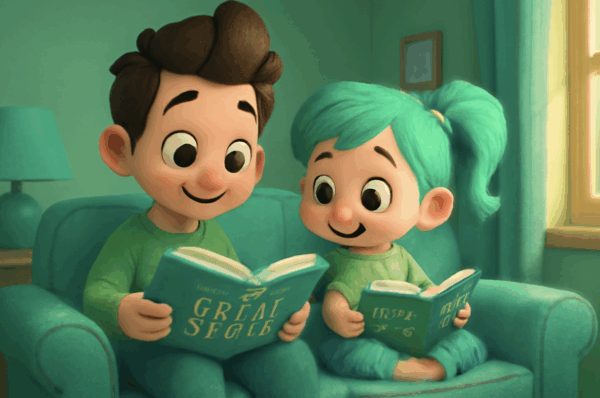Green publishing isn’t just about hugging trees—it’s about making sure we still have trees to hug. My husband always jokes that if we don’t start making better choices, our future family photos will be just us standing in front of barren land. As environmental concerns grow, the publishing world is shifting its focus toward more eco-friendly practices. Whether you’re a seasoned author or someone who just likes to show off their bookshelf on social media, understanding how to choose sustainable paper and printing methods is crucial. After all, no one wants their latest book to contribute to deforestation, right? (Imagine your beautifully illustrated children’s book ironically wiping out forests—yikes!)
But don’t worry, navigating green publishing isn’t as complicated as it sounds. With companies like Chelsea Green leading the charge, you can easily make eco-conscious choices without sacrificing quality or style. Let’s dive into details on how you can save the planet—one book at a time.
What is Green Publishing?
Green publishing refers to the practice of producing and distributing printed materials in an environmentally responsible manner. This approach considers the entire lifecycle of a publication, from the sourcing of materials to the end-of-life disposal or recycling of the final product. The goal is to minimize the environmental impact of the publishing process while maintaining the quality and integrity of the final product. By adopting green publishing practices, authors and publishers can contribute to a more sustainable future, ensuring that the stories we love don’t come at the expense of the planet.
The Importance of Sustainable Living
Sustainable living is a lot more than just a buzzword; it’s a lifestyle choice that can make a significant difference in our world. Imagine a life where every decision you make—from the food you eat to the way you travel—contributes to a healthier planet. That’s the essence of sustainable living: reducing our carbon footprint and making choices that minimize environmental harm.
Chelsea Green Publishing has been a trailblazer in this arena, offering a treasure trove of titles that guide readers toward a more sustainable lifestyle. Books like “The Regenerative Agriculture Solution” provide not just theoretical knowledge but practical tips that you can implement in your daily life. Whether it’s learning how to compost, grow your food, or reduce energy consumption, these titles are a goldmine of information.
Your Publishing Journey Awaits – Start NowBy embracing the principles of sustainable living, you’re not just making a personal change; you’re contributing to a global movement. And with publishers like Chelsea Green leading the charge, the journey toward a greener future is well within reach.
Eco-Friendly Paper: The Heart of Green Publishing
Paper plays a starring role in green publishing. Choosing the right paper is crucial, but how do you make sure your choice supports sustainable living? You can start by looking for recycled paper or paper certified by the Forest Stewardship Council (FSC), which ensures that it’s sourced from responsibly managed forests. Another option is to opt for tree-free alternatives, like hemp, bamboo, or even recycled farm waste—yes, you read that right!
The paper choice is especially important for children’s books, where colorful photos and illustrations require high-quality printing. Companies like Chelsea Green have shown us how to balance quality with sustainability, and more publishers today are following their lead. And while the science behind eco-paper might seem overwhelming, your partnership with a knowledgeable printer can make all the difference. The key here? Don’t rush—focus on the details and start asking questions early in the process.
Sustainable Printing Methods: Small Changes, Big Impact
Once you’ve nailed down your eco-friendly paper choice, it’s time to think about sustainable printing methods. A lot of people don’t realize how much energy and resources traditional printing uses. Luckily, eco-friendly alternatives are available today. Some companies opt for soy or vegetable-based inks, which are less harmful to the environment compared to petroleum-based inks. Waterless printing is another game-changer, reducing the water and chemicals required for the process.
Sustainable printing isn’t just about environmental impact; it’s also about creating a product people want to read. Eco-conscious consumers, especially those who support local farmers and care about where their food comes from, will appreciate the thought and effort put into the printing process. You’re not just printing a book—you’re making a statement. And hey, that’s a partnership worth celebrating!
The Role of Digital Publishing: More Than Just a Backup Plan, a Focus on Sustainability
While print publishing still holds a special place, digital publishing has quickly become a crucial part of green publishing. Canada has seen a surge in e-book sales over the last few years, especially with new releases in science and sustainable living.
While digital publishing isn’t without its environmental costs—data centers consume a lot of energy—it’s often a greener alternative, especially for smaller print runs or books that might be read just once a year. A master of sustainable publishing knows how to balance print and digital options to ensure that both methods are used responsibly.
Practical Tips for Authors Looking to Go Green with Children’s Books
Going green with your book publishing can be simple with a few smart decisions. Start early by discussing eco-friendly options, like FSC-certified or recycled paper, with your publisher. Opt for sustainable printing methods such as vegetable-based inks and waterless printing, as seen in practices by companies like Greene Publishing. Don’t overlook offering digital versions to minimize the physical footprint and reduce packaging waste during distribution. By making these eco-friendly choices, especially for children’s books, you’ll ensure your next published book supports sustainable living while benefiting children by providing them with environmentally responsible reading materials. Every green step—from paper to printing—makes a difference!
Final Thoughts: Green Publishing Starts with You
At the end of the day, green publishing isn’t just a responsibility for publishers—it’s something readers can support too. Whether you’re a children’s book author, a publisher, or simply a book lover, your choices matter. By focusing on eco-friendly paper and sustainable printing methods, you help create a future where books and nature can thrive side by side. So next time you click “order” on a website in your browser or pick up a book at your local store, remember: sustainable publishing starts with a single decision—yours!
If you’re ready to take your book from manuscript to a sustainable masterpiece? At Spines, we make eco-friendly publishing simple, accessible, and stylish. Join the movement toward green publishing—your next book could be the one that saves trees, not cuts them down. Let’s create a future where every story supports a greener planet. Explore eco-conscious publishing options with us at Spines today!
Your Publishing Journey Awaits – Start Now







